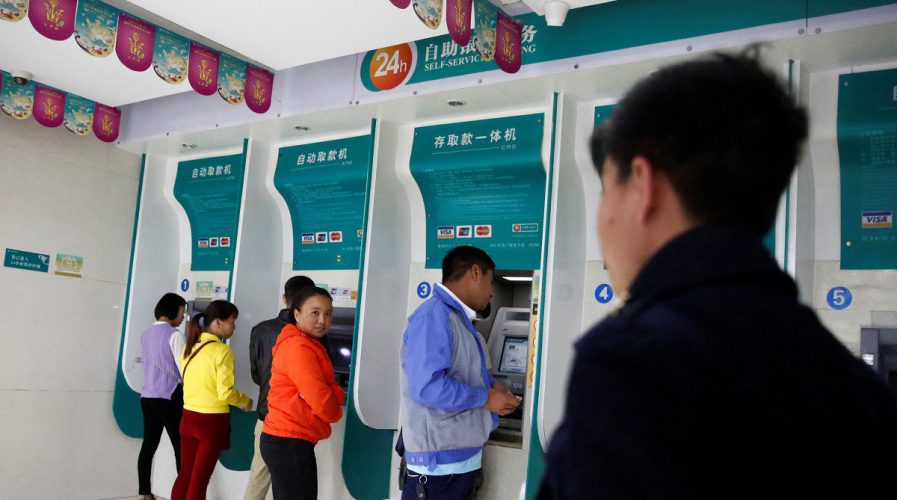
. Source: Reuters
The future of digital banking is all about the consumer
By Yaser Alzubaidi, Avaya Engagement Solutions Sales Lead, Asia Pacific, Middle East & Africa
DIGITAL transformation is changing every industry, and unsurprisingly, banking is at the forefront of this trend.
Current Analysis defines digital transformation as a “way of helping companies reduce the complexity of how they interact with their customers”. Successful companies are not only leading with great customer service, they are ensuring it is seamless and personalized.
In the banking sector, digital transformation is not just about increasing operational efficiency and responding faster to changing business environments. It is about improving the customer experience to drive retention and loyalty with every customer interaction.
Transforming the banking experience for mobile-first generation
Customer expectations have never been higher. We all carry powerful computers in our pockets that allow us to share photos and video, communicate with our friends and colleagues, check emails, make reservations, buy tickets, compare prices, read crowdsourced reviews and connect instantly in ways unimaginable a decade ago. This holds especially true in Southeast Asia, which has a growing young, tech-savvy population and some of the highest mobile penetration rates of anywhere in the world.
SEE ALSO: Banking disrupted: Malaysian banks urged to innovate, embrace new reality
With digital banking channels growing at an exponential rate, connecting with the always-on, always-connected, mobile-first younger generation is essential for growth and business continuity for any financial institution. According to a global research report commissioned by BT and Avaya in 2015, 82 percent of consumers today say it should be easy to contact organizations by all channels.

Banking kiosks are just one way digital has asserted itself in the industry, though greater changes are coming. Source: Shutterstock
Krungsri, one of the fastest-growing financial institutions in Thailand, is giving its tech-savvy consumers a seamless, consistent experience across all different banking channels – from the branch, all the way to digital and interactive experiences.
The digital experience can also be extended to the automated teller machine (ATM). As consumers, we expect to be able to engage seamlessly across mobile and video channels and expect services available anytime, anywhere and on any device. A self-service kiosk can enable customers to conduct transactions with the bank’s call center, by video, virtual collaboration, email, social media, chat, SMS or phone, and to even switch between devices while talking to the same bank agent.
With self-service kiosks, customers can instantly receive and securely apply for instant banking products and services such as credit and debit cards, banking statements and loan applications.
Staying ahead of security challenges with new technologies
Biometric technologies such as voice authentication, fingerprint and facial recognition are ready for prime time, and banking institutions are embracing them. Last year, DBS Bank launched its digibank app in Southeast Asia, which allows customers to log into their accounts securely with their fingerprints.
As banking and finance companies continue their efforts to digitally transform, this process will shine an even brighter spotlight on the need to modernize security measures, particularly identity access management systems. Companies must abandon their legacy identity security tools and begin deploying new systems that are highly scalable. It must also be equipped with high-end encryption technologies to enable high-quality user experience coupled with the best security possible.
Security concerns are also leading to increased interest in blockchain technology. In fact, most blockchain deployment will be in the security and fraud areas. Expect fintech startups to massively invest in it.

Expect blockchain technology to be adopted by more banks and fintech startups for its security and ease of use. Source: Shutterstock/donatas1205
Blockchain will also change how payments are made. Last November, the Monetary Authority of Singapore (MAS) announced their partnership with R3, a blockchain technology company, and a consortium of financial institutions on a proof-of-concept project to conduct inter-bank payments using blockchain technology. This could potentially remove the limiting factor of time zone differences, resulting in a payment system that allows participants to transact in different global markets round-the-clock.
SEE ALSO: Companies need to be ‘digitally discerning’ when adopting new tech
Banking customers’ preferences and expectations are changing. Leading banks across Southeast Asia need to adapt to these changing expectations and start leveraging on the technology their customers are relying on daily – from mobile apps to self-service channels to social media tools.
As such, an increasing number of engagement solutions are being used to deliver these personalized collaborative experiences. However, banks should also be mindful of security concerns surrounding these new technologies to protect their customers as well as themselves.
READ MORE
- Ethical AI: The renewed importance of safeguarding data and customer privacy in Generative AI applications
- How Japan balances AI-driven opportunities with cybersecurity needs
- Deploying SASE: Benchmarking your approach
- Insurance everywhere all at once: the digital transformation of the APAC insurance industry
- Google parent Alphabet eyes HubSpot: A potential acquisition shaping the future of CRM
